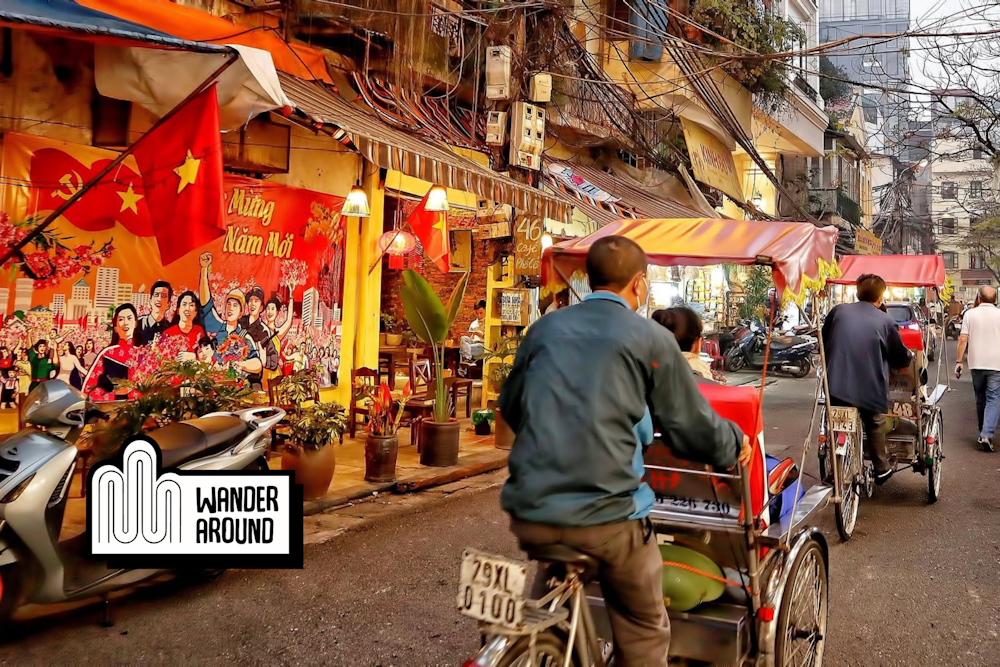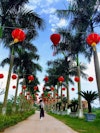Unique experiences in Hanoi you should not miss out
Visiting Hanoi is like traveling through a time tunnel: ancient temples and multi-story pagodas coexist with congested roads flanked by modern skyscrapers. Do you know about unique experiences in Hanoi?

Hanoi's exotic, filthy, and hip Vietnamese capital is a full-fledged assault on the senses. Despite its political and historical significance and the constant noise generated by a large population, Hanoi has a more intimate, urbane appeal than Ho Chi Minh City. Its crumbly, lemon-hued colonial architecture is a visual feast; swarms of buzzing motorbikes invade the ear; and the delicate scents and tastes of delicious street food can be found all over a city that, unlike so many of its regional contemporaries, manages to modernize with grace.
Moreover, stubbornly traditional and forward-thinking, bustling Hanoi has primarily resisted the rapid advancements sweeping the rest of the country, and the city frequently confounds first-time visitors. This list of the top unique experiences in Hanoi can help you get started and make the most of what Vietnam's most historical city has to offer.
Dive into the Old Quarter
What to do in Hanoi? You could spend several hours in Hanoi's commercial heart, the Old Quarter. The best way to explore the enticing maze of streets is to wander around. Pull up a plastic stool whenever you need to rest and enjoy a cup of Vietnamese coffee or beer while seeing the world go by.
Hanoi's Old Quarter, located in the Ba Dinh district near the business district, is the city's busiest attraction and an unmissable assault on the senses. Along streets lined with French colonial buildings, buzzing motorbikes weave around people wearing large conical straw hats and pushing carts laden with goods. Come just after sunrise, when the light casts ethereal hues over the century-old facades, and you'll find only the most hardworking locals busy preparing for the day. A walking food tour led by a local is another excellent way to learn about the 36 streets of the quarter and the best dishes that represent them.
If Anthony Bourdain, the late celebrity chef, chose to treat Barack Obama to a taste of this iconic bowl of grilled pork, herbs, and noodles, Hanoi's bun cha must be pretty unique. Lotte Center Hanoi in Ba Dinh and Bun Cha Ba Duc in Quan Ba Dinh are good places to start. The unassuming restaurant where the two dined in 2016 has become legendary, but the fun scours the city for worthy competitors.
Learn to cross the road
Crossing through Hanoi traffic is a true cultural adventure and a great way to tune with the city's rhythms. The constant flow of cars and endless lines of motorbikes in Hanoi may appear to the untrained eye to be an impenetrable wall of deadly chaos, but the trick is to be slow, steady, and predictable.
Drivers are accustomed to dodging approaching pedestrians, and honking is simply a polite way of signaling when someone is nearby. The most challenging part is summoning the courage to leave the sidewalk and begin walking..., especially for the first time.
Drink the world's cheapest beer
Bia hoi, also known as "the world's cheapest beer," is sold in Hanoi for between 5000VND and 7000VND per glass ($0.22 to 0.31). Bia hoi, made from fermented maize, is served and consumed by the roadside, with patrons sitting and conversing casually on low plastic stools.
The Beer Corner — the intersection of Ta Hien and Luong Ngoc Quyen in the Old Quarter — is Hanoi's busiest drinking spot; an entire street was congested with red plastic chairs, locals, travelers, and the echo of their boasts.
Try ostrich meat in Son Tay.
Believe it or not, Ostrich farming has become one of the most profitable businesses in North Vietnam. Near Son Tay are the Ba Vi mountains, a popular weekend getaway for Hanoi residents and a popular place to try African bird meat while in Asia. It's typically served fried, as a meatloaf, or boiled in a hot pot with vegetables. If exotic meat isn't your thing, try Ba Vi's homegrown hill chickens fried with fresh peppers.
Enjoy the music and art scene.
Hanoi Rock City has been hosting live bands, electronic and experimental music, art events, and a regular open mic night on Wednesdays since 2010. Hanoi's nightlife features a few well-established kinds of music and arts venues, from jazz and alternative rock bands to DJ nights. Savage in Tay Ho District opened its doors in 2016 and quickly became the city's go-to electronic music club, attracting local and international DJs to spin the best house and techno beats.
Binh Minh Jazz Club, in the best places in Hanoi at the Old Quarter, has real strings, shiny brasses on most nights, and a selection of good whiskey pairs to live local jazz ensembles. In addition to being a popular all-day meeting spot for socializing over coffee and beers, the Hanoi Social Club in Hoan Kiem hosts regular art events.
Visit Vietnam's Museum of Ethnology
This museum, which opened in 1997, honors Vietnam's 54 ethnic groups. It's beneficial for those short on time but interested in anthropology: the massive collection of 15,000 artifacts and 42,000 photographs on display provides a quick and comprehensive ethnographic tour of this vast country. The gardens feature a life-sized outdoor pool of traditional houses from Vietnam's most prominent ethnic groups.
Perfume Pagoda Hanoi
The Perfume Pagoda (Chua Huong) complex's cave shrine is one of the country's most sacred sites. From the paddy fields to the southwest of Hanoi, steep-sided limestone hills rise. The Perfume Pagoda, named after the spring blossoms that scent the air, is located on the most easterly of these forested spurs, known as Nui Huong Tich (the "Mountain of the Perfumed Traces"). The perfume pagoda is accessible by boat, making it an excellent day trip.
The Red River Delta ends sixty kilometers southwest of Hanoi, where paddy fields give way to steep-sided limestone hills. The most easterly of these forested spurs shelters the Perfume Pagoda, Chua Huong, which is hidden in the folds of Ha Tay Province's Mountain of the Perfumed Traces and is said to have been named after the scent of spring blossoms in the air.
The journey begins with an hour-long rowboat ride up a silent, flooded valley nestled among karst hills, where fishermen and farmers toil in flooded fields. The Perfume Pagoda is one of over thirty pagodas that dot these hills. It is housed in a spectacular cave over 50 meters high. A path paved with stones and shaded by gnarled frangipani trees leads you to the seventeenth-century Chua Thien Chu, where the boat drops you.
Exploring around Hanoi
After you've seen the highlights of Hanoi, there are plenty of other places to visit in the surrounding area. There are dozens of other historic structures, the most atmospheric of which are the Thay Pagoda and Tay Phuong Pagoda, which are buried deep in the delta and contain fine examples of traditional Vietnamese architecture. You could also spend months discovering the delta villages, mainly the craft villages, which have managed to keep their traditions despite the constant influx of tourists.
A worthwhile stop is the Ho Chi Minh Trail Museum, which is southwest of the center and is particularly interesting if you're leaving town on Highway 6—for example, to Mai Chau. Finally, just north of the Red River is the ancient citadel of Co Loa, which is worth a quick stop, mainly for historical reasons, as little remains of its former grandeur.
That's all unique experiences in Hanoi. I wish you many unforgettable memories of things to do in the capital of Vietnam!
